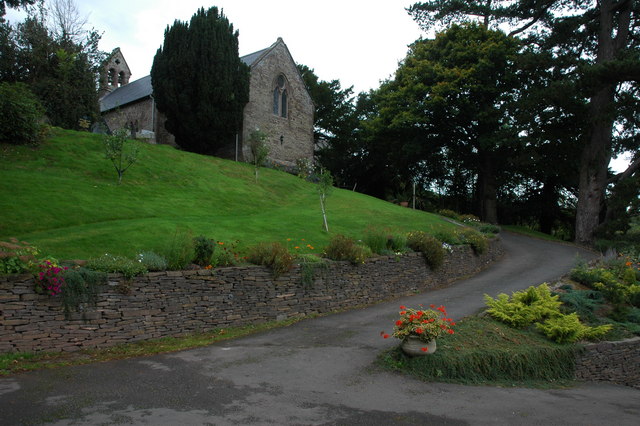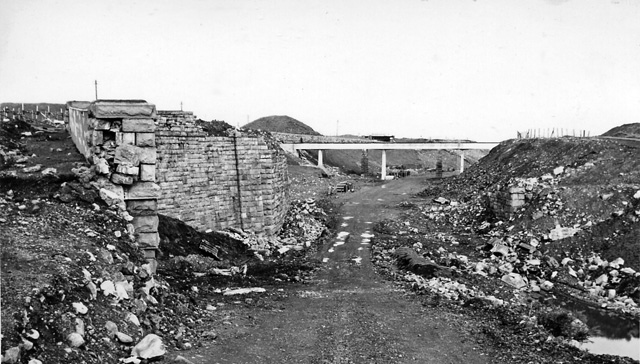|
Oldcastle, Monmouthshire
Oldcastle ( cy, Yr Hencastell) is a small village in Monmouthshire, south east Wales. Location Oldcastle is located six miles north of Abergavenny just off the A465 Abergavenny to Hereford road. History and amenities The village is on the River Monnow and very close to the Black Mountains and sits right next to the Wales-England border The village is associated with John Oldcastle of an old Herefordshire landowning family through the medieval In the history of Europe, the Middle Ages or medieval period lasted approximately from the late 5th to the late 15th centuries, similar to the Post-classical, post-classical period of World history (field), global history. It began with t ... period. External linksOldcastle on Vision of Britain [...More Info...] [...Related Items...] OR: [Wikipedia] [Google] [Baidu] |
Oldcastle Church - Geograph
Oldcastle may refer to: Places *Oldcastle, Bridgend, Wales *Oldcastle, Cheshire, England *Oldcastle, County Meath, Ireland *Oldcastle, Monmouthshire, Wales *Oldcastle, Ontario, Canada People with the surname *Sir John Oldcastle, a supporter of the Lollards in the 15th century **''Sir John Oldcastle'', a play about him Other uses *Oldcastle Revolt The Oldcastle Revolt was a Lollard uprising directed against the Catholic Church and the English king, Henry V. The revolt was led by John Oldcastle, taking place on the night of 9/10 January 1414. The rebellion was crushed following a decisive ..., a revolt led by John Oldcastle See also * Old Castle (other) {{disambiguation, geo, surname ... [...More Info...] [...Related Items...] OR: [Wikipedia] [Google] [Baidu] |
Monmouthshire
Monmouthshire ( cy, Sir Fynwy) is a county in the south-east of Wales. The name derives from the historic county of the same name; the modern county covers the eastern three-fifths of the historic county. The largest town is Abergavenny, with other towns and large villages being: Caldicot, Chepstow, Monmouth, Magor and Usk. It borders Torfaen, Newport and Blaenau Gwent to the west; Herefordshire and Gloucestershire to the east; and Powys to the north. Historic county The historic county of Monmouthshire was formed from the Welsh Marches by the Laws in Wales Act 1535 bordering Gloucestershire to the east, Herefordshire to the northeast, Brecknockshire to the north, and Glamorgan to the west. The Laws in Wales Act 1542 enumerated the counties of Wales and omitted Monmouthshire, implying that the county was no longer to be treated as part of Wales. However, for all purposes Wales had become part of the Kingdom of England, and the difference had little practical effect. F ... [...More Info...] [...Related Items...] OR: [Wikipedia] [Google] [Baidu] |
Wales
Wales ( cy, Cymru ) is a Countries of the United Kingdom, country that is part of the United Kingdom. It is bordered by England to the Wales–England border, east, the Irish Sea to the north and west, the Celtic Sea to the south west and the Bristol Channel to the south. It had a population in 2021 of 3,107,500 and has a total area of . Wales has over of coastline and is largely mountainous with its higher peaks in the north and central areas, including Snowdon (), its highest summit. The country lies within the Temperateness, north temperate zone and has a changeable, maritime climate. The capital and largest city is Cardiff. Welsh national identity emerged among the Celtic Britons after the Roman withdrawal from Britain in the 5th century, and Wales was formed as a Kingdom of Wales, kingdom under Gruffydd ap Llywelyn in 1055. Wales is regarded as one of the Celtic nations. The Conquest of Wales by Edward I, conquest of Wales by Edward I of England was completed by 1283, th ... [...More Info...] [...Related Items...] OR: [Wikipedia] [Google] [Baidu] |
Abergavenny
Abergavenny (; cy, Y Fenni , archaically ''Abergafenni'' meaning "mouth of the River Gavenny") is a market town and community in Monmouthshire, Wales. Abergavenny is promoted as a ''Gateway to Wales''; it is approximately from the border with England and is located where the A40 trunk road and the A465 Heads of the Valleys road meet. Originally the site of a Roman fort, Gobannium, it became a medieval walled town within the Welsh Marches. The town contains the remains of a medieval stone castle built soon after the Norman conquest of Wales. Abergavenny is situated at the confluence of the River Usk and a tributary stream, the Gavenny. It is almost entirely surrounded by mountains and hills: the Blorenge (), the Sugar Loaf (), Ysgyryd Fawr (Great Skirrid), Ysgyryd Fach (Little Skirrid), Deri, Rholben and Mynydd Llanwenarth, known locally as " Llanwenarth Breast". Abergavenny provides access to the nearby Black Mountains and the Brecon Beacons National Park. The M ... [...More Info...] [...Related Items...] OR: [Wikipedia] [Google] [Baidu] |
A465 Road
The A465 is a trunk road that runs from Bromyard in Herefordshire, England to Llandarcy near Swansea in South Wales. The western half is known officially as the Neath to Abergavenny Trunk Road, but the section from Abergavenny to the Vale of Neath is more commonly referred to as the Heads of the Valleys Road because it links the northern heads of the South Wales Valleys. Approximately following the southern boundary of the Brecon Beacons National Park, the Ordnance Survey ''Pathfinder'' guide describes it as the unofficial border between rural and industrial South Wales. The A465 provides an alternative route between England and the counties in South West Wales and to the Ferry, ferries to Republic of Ireland, Ireland. Route The A465 runs south-west from Bromyard towards the River Lugg, from where it runs Concurrency (road), concurrently with the A4103 road, A4103 for a short distance before entering Hereford. After a short distance on the A49 road, A49, it crosses the River Wye, ... [...More Info...] [...Related Items...] OR: [Wikipedia] [Google] [Baidu] |
Hereford
Hereford () is a cathedral city, civil parish and the county town of Herefordshire, England. It lies on the River Wye, approximately east of the border with Wales, south-west of Worcester and north-west of Gloucester. With a population of 53,112 in 2021 it is by far the largest settlement in Herefordshire. An early town charter from 1189, granted by Richard I of England, describes it as "Hereford in Wales". Hereford has been recognised as a city since time immemorial, with the status being reconfirmed as recently as October 2000. It is now known chiefly as a trading centre for a wider agricultural and rural area. Products from Hereford include cider, beer, leather goods, nickel alloys, poultry, chemicals and sausage rolls, as well as the famous Hereford breed of cattle. Toponymy The Herefordshire edition of Cambridge County Geographies states "a Welsh derivation of Hereford is more probable than a Saxon one" but the name "Hereford" is also said to come from the Angl ... [...More Info...] [...Related Items...] OR: [Wikipedia] [Google] [Baidu] |
River Monnow
The River Monnow ( cy, Afon Mynwy) marks the England–Wales border for much of its length. After flowing through southwest Herefordshire, England, and eastern Monmouthshire, Wales, its confluence with the River Wye is approximately south of Monmouth. The Monnow rises near Craswall on Cefn Hill just below the high Black Mountains, Wales. It flows southwards, gaining the waters of its tributaries the Escley Brook and Olchon Brook near Clodock and the waters of the River Honddu, from the Welsh side of the Black Mountains, near Pandy. The river then flows briefly eastwards, to Pontrilas, where it is joined by its largest tributary, the River Dore before again turning southwards. At Monmouth, the Monnow joins into the River Wye with the River Trothy. The unique medieval Monnow Bridge in Monmouth is the only remaining fortified river bridge in Great Britain with its gate tower standing on the bridge. The long-distance Monnow Valley Walk follows the river. Toponymy The Ri ... [...More Info...] [...Related Items...] OR: [Wikipedia] [Google] [Baidu] |
Black Mountains, Wales
The Black Mountains ( cy, Y Mynydd Du or sometimes ) are a group of hills spread across parts of Powys and Monmouthshire in southeast Wales, and extending across the England–Wales border into Herefordshire. They are the easternmost of the four ranges of hills that comprise the Brecon Beacons National Park, and are frequently confused with the westernmost, which is known as the Black Mountain. The Black Mountains may be roughly defined as those hills contained within a triangle defined by the towns of Abergavenny in the southeast, Hay-on-Wye in the north and the village of Llangors in the west. Other gateway towns to the Black Mountains include Talgarth and Crickhowell. The range of hills is well known to walkers and ramblers for the ease of access and views from the many ridge trails, such as that on the Black Hill (Herefordshire) at the eastern edge of the massif. The range includes the highest public road in Wales at Gospel Pass, and the highest point in southern England ... [...More Info...] [...Related Items...] OR: [Wikipedia] [Google] [Baidu] |
John Oldcastle
Sir John Oldcastle (died 14 December 1417) was an English Lollard leader. Being a friend of Henry V, he long escaped prosecution for heresy. When convicted, he escaped from the Tower of London and then led a rebellion against the King. Eventually, he was captured and executed in London. He formed the basis for William Shakespeare's character John Falstaff, who was originally called John Oldcastle. Family Oldcastle's date of birth is unknown, although dubious and possibly apocryphal sources place it variously at 1360 or 1378, although 1370 is most likely closer to the truth. His parents were Richard and Isabel Oldcastle of Almeley, Herefordshire. His grandfather, also called John Oldcastle, was Herefordshire's MP during the latter part of the reign of King Richard II. Early life Oldcastle is first mentioned in two separate documents in 1400, first as a plaintiff in a suit regarding the advowson of Almeley church, and again as serving as a knight under Lord Grey of Codnor in a ... [...More Info...] [...Related Items...] OR: [Wikipedia] [Google] [Baidu] |
Herefordshire
Herefordshire () is a county in the West Midlands of England, governed by Herefordshire Council. It is bordered by Shropshire to the north, Worcestershire to the east, Gloucestershire to the south-east, and the Welsh counties of Monmouthshire and Powys to the west. Hereford, the county town of Herefordshire has a population of approximately 61,000, making it the largest settlement in the county. The next biggest town is Leominster and then Ross-on-Wye. The county is situated in the historic Welsh Marches, Herefordshire is one of the most rural and sparsely populated counties in England, with a population density of 82/km2 (212/sq mi), and a 2021 population of 187,100 – the fourth-smallest of any ceremonial county in England. The land use is mostly agricultural and the county is well known for its fruit and cider production, and for the Hereford cattle breed. Constitution From 1974 to 1998, Herefordshire was part of the former non-metropolitan county of Hereford and Wor ... [...More Info...] [...Related Items...] OR: [Wikipedia] [Google] [Baidu] |
Medieval
In the history of Europe, the Middle Ages or medieval period lasted approximately from the late 5th to the late 15th centuries, similar to the Post-classical, post-classical period of World history (field), global history. It began with the fall of the Western Roman Empire and transitioned into the Renaissance and the Age of Discovery. The Middle Ages is the middle period of the three traditional divisions of Western history: classical antiquity, the medieval period, and the modern history, modern period. The medieval period is itself subdivided into the Early Middle Ages, Early, High Middle Ages, High, and Late Middle Ages. Population decline, counterurbanisation, the collapse of centralized authority, invasions, and mass migrations of tribes, which had begun in late antiquity, continued into the Early Middle Ages. The large-scale movements of the Migration Period, including various Germanic peoples, formed new kingdoms in what remained of the Western Roman Empire. In the ... [...More Info...] [...Related Items...] OR: [Wikipedia] [Google] [Baidu] |







